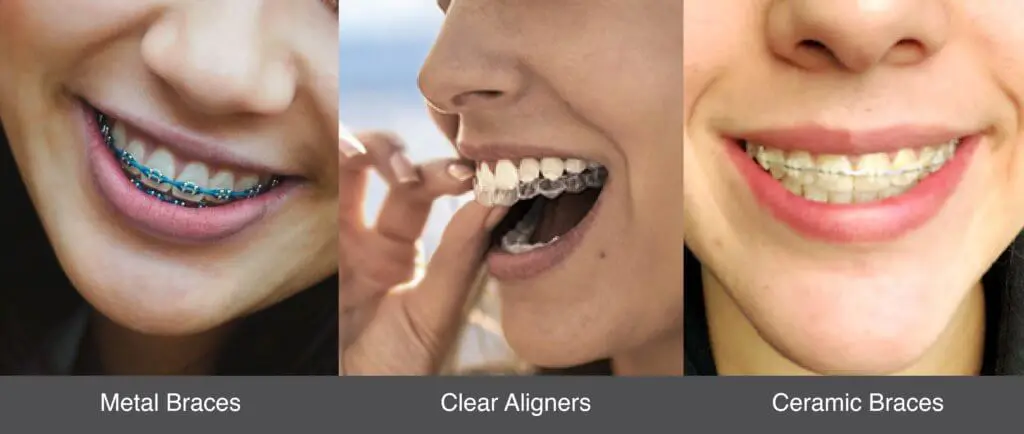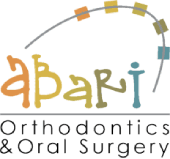
Types of Braces: Orthodontics Has Come a Long Way
Depending on what the individual patient needs, there are different types of braces we use at Abari Orthodontics to treat problems with alignment and bite. The most efficient option is often traditional metal braces, but we also offer clear aligners and ceramic braces.
The Mechanics and Biology of Aligning Teeth
When braces apply pressure to our teeth, they don’t simply move. There’s an intense cellular process happening in our jaws in response to that pressure. In front of the tooth, specialized cells called osteoclasts break down bone cells that are in the way, while osteoblasts build new bone cells behind the tooth to keep it fitting snugly in its socket. The bone is actually reshaping itself!
This is a major reason why it’s so important to go to an orthodontist for dental crowding, crookedness, or bad bites. It takes all those years of education and training we receive to be able to understand the best ways to encourage teeth to shift to their proper position. Someone with less experience might attempt an approach that doesn’t produce the best results or puts the teeth at risk.
Traditional Wire Braces
The wires and brackets are what everyone pictures when they think of braces, and there’s a reason we still use them: they are effective. Wire braces consist of metal brackets that are cemented to each tooth and archwires that run across them. The archwires come in different sizes and stiffness levels depending on how Drs. Abari & Will want the patient’s teeth to move between appointments, and they are held in place by colorful elastic ligatures. Unlike other types of braces like clear aligners, it is very easy to incorporate additional appliances with wire braces when we need to address problems like malocclusion.
Common Appliances Used With Wire Braces
Sometimes, we need one or two other appliances in addition to the braces themselves in order to have the correct bite and palate shape as well as straight teeth, and sometimes we need these appliances to get our teeth ready for braces in the first place.
In order to put braces on, you might need spacers between your back teeth for a while. Spacers are small elastic rings that move your molars apart just enough to fit bands onto them to anchor your braces. This process can take from 3-10 days. Not all patients with wire braces will need spacers first.
Palatal expanders correct narrow palates by bracing against the teeth and the roof of the mouth and exerting gradual pressure outwards to encourage the palate to widen to the proper shape. These are important appliances for correcting crossbites and crowding. Palatal expanders often go in before braces to make room for the teeth to go where they’re supposed to go.
A holding arch may be used when a child loses baby teeth too early. It holds the permanent front teeth and molars in place so they don’t shift and crowd the teeth that haven’t had a chance to grow in yet. A holding arch for the upper jaw is sometimes called the “Nance button,” and lower jaw holding arches are called “lower lingual holding arches.”
Bite plates are acrylic, retainer-like appliances that correct “deep” bites. A deep bite occurs when the upper teeth overlap the lower teeth so much that the lower incisors touch the gum tissue behind the upper incisors, leading to many complications. A bite plate creates a barrier between the lower incisors and the upper gum tissue and helps shift the teeth to decrease the overlap.
Clear Aligners
For patients who prefer lower profile orthodontic treatment, there are clear aligners. Instead of brackets and wires, you receive a series of aligners that shift your teeth into their proper position one step at a time. Aside from being nearly invisible, one of the best things about clear aligners compared to other types of braces is that the trays are removable, which makes eating and keeping your teeth clean during your orthodontic treatment much easier, and there’s no banned foods list!
Ceramic Braces
Ceramic braces offer low-profile treatment like clear aligners but are just as effective as traditional metal braces at moving teeth into position quickly. What distinguishes them from metal braces is that the brackets are made of transparent ceramic, so the braces blend in with your teeth. Ceramic braces may be preferable for adult patients who don’t want their treatment to be so visible.
No Matter What Your Treatment Is, Retention Matters
The bone-reshaping process takes time, and our teeth still remember their old position after the braces come off. This is why it’s so important to wear retainers. They help the teeth and jaws get used to the new position, and they also prevent separate shifting that happens to most people’s teeth as they get older.
Get the Best Braces for You With Abari Orthodontics and Oral Surgery!
If you need orthodontic treatment, schedule an initial consultation with us by calling our San Dimas office at (909) 599-4000 (or text) or sending us an email. Make sure to check the map for instructions before you head our way. We will determine which of the types of braces will be best for your smile. Here at Abari Orthodontics and Oral Surgery, we’re excited to help you achieve the smile of your dreams!

